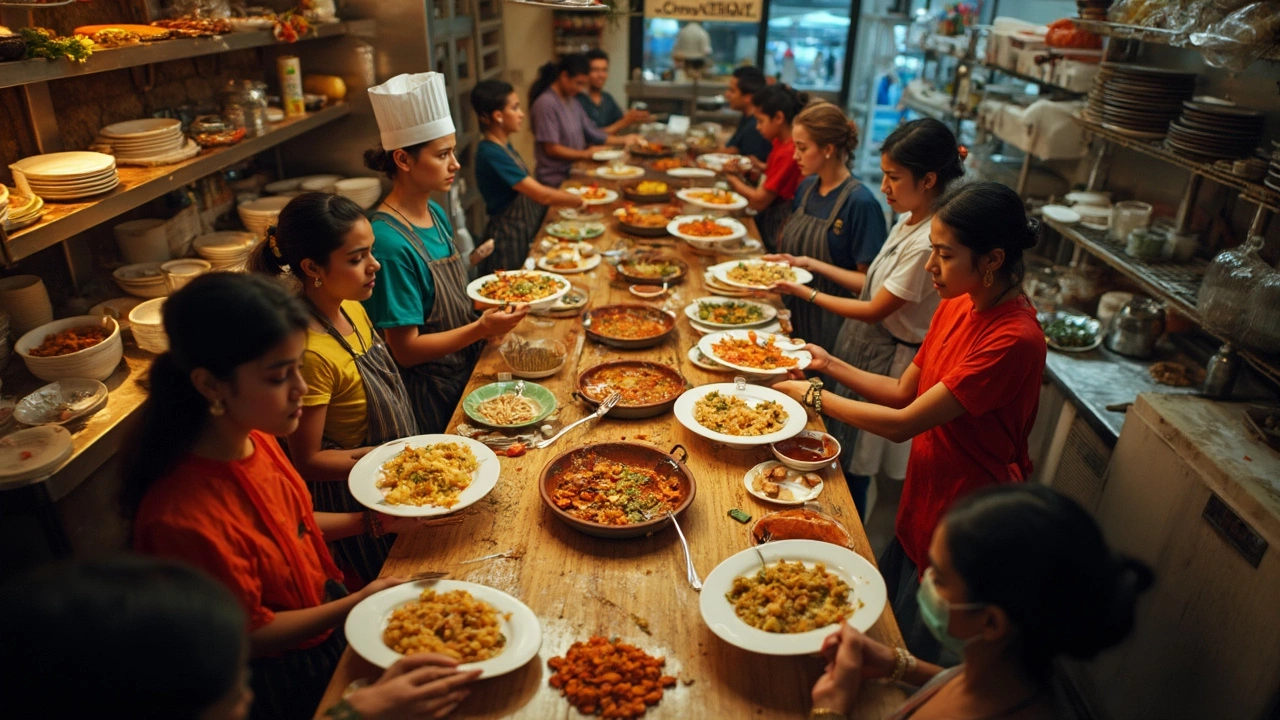Everything You Need to Know About blanching
When working with Blanching, a quick heat treatment that stops enzyme action, locks in color, and preserves nutrients in foods or plant tissues. Also known as parboiling, it plays a key role in both kitchen prep and agricultural processing.
One of the most common contexts for vegetable cooking, the practice of preparing edible plants using heat, water, and seasoning is blanching. The method involves a brief boil followed by an immediate ice‑water shock, which halts cooking and keeps veggies crisp. This quick step also makes skins easier to peel, a trick many home cooks use for tomatoes and almonds.
Blanching isn’t just about the pot; the quality of garden soil, the medium that supplies nutrients, water, and stability to plant roots influences how well vegetables respond to the heat shock. Well‑structured soil with good organic matter improves root health, leading to firmer textures that survive the boil‑and‑cool cycle without turning mushy.
Good water management, the planning and delivery of water to plants through techniques like drip irrigation or mulching is another hidden factor. Consistent moisture levels prevent sudden stress, so when you plunge veggies into boiling water they’re less likely to wilt. In fact, many sustainable gardeners pair drip irrigation with occasional blanching of leafy greens to boost shelf‑life after harvest.
The technique even reaches the grain world. In rice parboiling, a partial boiling of harvested rice before milling, the same principle applies: a quick heat exposure improves grain hardness, reduces breakage, and locks in vitamins. This industrial version shows how blanching bridges home kitchens and large‑scale food processing.
Nutritionists love blanching because it preserves water‑soluble vitamins better than long‑cook methods. A short boil followed by an ice bath keeps vitamin C and B‑complex levels higher, while the rapid cooling stops the enzymes that would otherwise degrade them. So if you’re aiming for a nutrient‑dense plate, reach for this technique over steaming or roasting.
From a manufacturing viewpoint, the concept of “brief heat treatment then rapid cooling” mirrors processes used in plastics recycling and metal tempering. While those fields aren’t directly covered on this page, the underlying physics is the same: control temperature spikes to achieve desired properties without over‑processing.
Garden‑care practices like no‑till benefit blanching too. When soil stays undisturbed, its structure remains stable, reducing the risk of root shock during the quick heat exposure. This synergy means that a garden set up for low‑maintenance, healthy soil also makes for better‑blanched produce.
Cooking enthusiasts often wonder whether blanching is a prep step or a final dish. It can be both: some recipes call for a quick blanch before sautéing, while others serve chilled blanched vegetables as a light salad. The versatility comes from the same core steps—boil, ice, drain—allowing you to adapt the method to any cuisine.
Practical tips: use a large pot with plenty of water, salt it like pasta, time the boil (usually 1–3 minutes depending on the veggie), then plunge into a bowl of ice water for the same duration. Pat dry, season, and enjoy. For large batches, a kitchen strainer or a large tray works wonders.
Below you’ll find a curated mix of articles that dive deeper into each of these angles—whether you’re curious about water management in container gardens, the science behind rice parboiling, or how blanching fits into sustainable agriculture. Explore the collection to sharpen your kitchen skills and boost your garden’s performance.
Unit Process Example in Food Processing: What Really Happens Inside the Factory
This article dives into what a unit process means in the world of food processing and gives a concrete example that anyone can relate to. It uncovers how these steps make food safer, tastier, and longer lasting. There's a focus on why each step matters, not just for big factories but even for home kitchens. If you've ever wondered exactly what happens to your food between farm and fork, this breaks it down into easy-to-understand chunks. Tips for recognizing unit processes in everyday foods are sprinkled throughout.
- manufacturing
- India
- food processing
- garden tips
- rice cultivation
- government schemes
- balcony garden
- urban gardening
- balcony gardening
- profitable business
- business ideas
- plastic manufacturing
- drip irrigation
- plant care
- steel manufacturing
- sustainable gardening
- startup ideas
- steel industry
- flower gardening
- textile manufacturers






